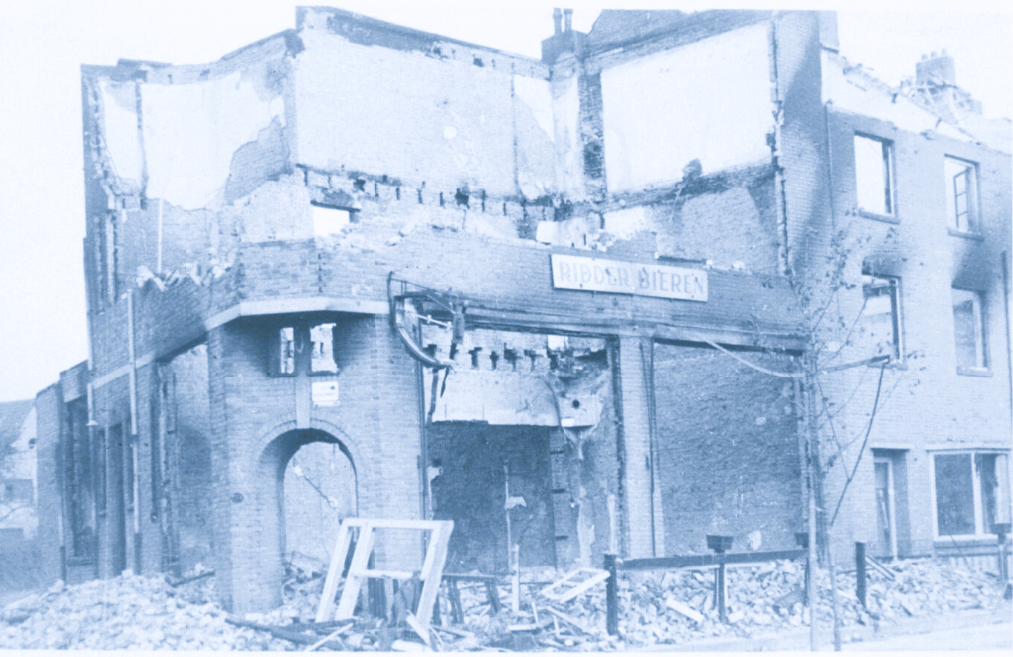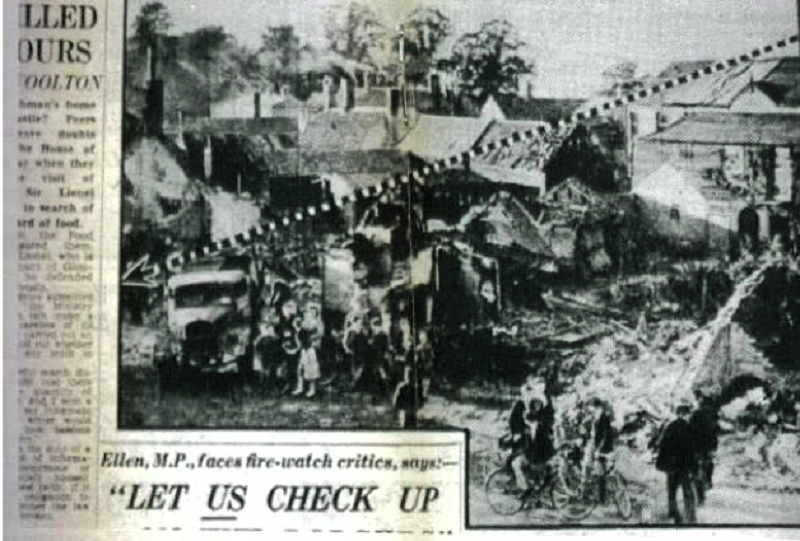
I have written about the bombing of Geleen before, but since today is the 81st anniversary, I thought it a good idea to revisit that awful day. Geleen is a town in the southeast part of the Netherlands. It used to be a mining town.
Although the Bombing of Geleen was a devastating event, I only learned about it a few years ago.
On 5 October 1942, the British RAF accidentally bombed a considerable part of South Limburg, particularly Geleen. As a result, 83 residents died, and many were injured. The material damage was immense. Due to the bad weather, the British had dropped their explosive load randomly over a far too large area.
On Monday evening, 5 October 1942, a total of 257 bombers took off in quick succession from various airfields in England. All aircraft were from the Royal Air Force (RAF). The crews consisted mainly of English and Canadians. The bombers were of the Wellington, Stirling, and Lancaster types. It was important that the weather forecast for the bombing flight (focused on destroying the German city of Aachen) cooperated. The expectation was that rain and low clouds would occur up to the northern German coastal area. A thunderstorm front over western France and southern England would also cause cloud cover above the Aachen target area. A cold front would cause difficulties in the area around Aachen. The bombers took off from the airfields with a formation over the Channel onto a Southern approach route—flying over the French town of Le Crotoy. However, to the North were the German air defenses—thus, this bombing could have been avoided.
The squadrons of RAF bombers would be led by a group of so-called Pathfinders. This group consisted of 25 Wellington, Lancaster, and Halifax aircraft. It would mark the target area by dropping flares and incendiary bombs. Next, bombers would bomb the target. This Pathfinder group had to deal with bad weather soon after the start and observed thunderstorms, lightning, electrical discharges in the atmosphere, ice build-up on the wings, and frozen bomb loads. Already at take-off, one Wellington bomber was struck by lightning, causing one of its engines to fail. The pilot returned and made a safe emergency landing after the crew had left the plane by parachute. Another Wellington Pathfinder caught fire over England, and the crew was able to leave the plane on time. The burning plane crashed into the small town of Somersham, where thirteen British citizens perished from the event.

Determining the target area of Aachen proved difficult. The planes dropped their bomb loads rather than randomly throughout the region. That included places that were often more than thirty kilometers from Aachen. Due to a change of course and bad weather, the target had become a different area than the original target of Aachen. Only 184 aircraft later reported that they had attacked Aachen. Places such as Heerlen, Brunssum, and Kerkrade were also affected. In the Geleen area, the bombs fell on all adjacent locations.

In the late evening of 5 October 1942, Geleen mistakenly been bombed. The result was a great number of people lost their lives. Due to the bad weather, the planes deviated significantly from their planned course. However, in Geleen, the approaching group of RAF bombers were spotted in time. The German Air Protection Center, located in the basement of the Geleen Town Hall, had already reported an air alarm earlier, at 9:42 p.m. After numerous flares illuminated Geleen and the surrounding area, a “major alarm” was sounded at 9:55 p.m. Immediately afterward, the bombs fell on Geleen. The town had to withstand two waves of attacks and lasted until approximately 11:10 p.m. About thirty planes carried out this inferno for about an hour. The high alarm did not get lifted until 11:55 p.m.
There were 83 deaths, 22 persons seriously injured, and 59 homes destroyed. Of the 227 severely damaged homes, 103 were ready for demolition. Furthermore, 528 houses were more or less damaged, and 1,728 houses had roof and glass damage. It caused three thousand people to become homeless.

The RAF pilots targeted mission that night was the city of Aachen, in Germany, including an area with a circumference of thirty kilometers. Flying in the direction of Geleen, the pilots imagined themselves on course to Aachen. In doing so, they almost certainly confused the States mine Maurits and its associated coking factory with the equally sized Mine Anna and the coking factory in Alsdorf. The Maurits complex is as far from the River Maas as mine Anna is, from the River Worm.

Thirteen coal miners lost their lives and the Maurits was heavily damaged in the raid. It took fire crews from several cities to help extinguish the fires caused by the bombing. Fire crews even came from Rotterdam, which is about 200 KM away from the mine, to help with the fires.
Three thousand residents were homeless, approximately twenty percent of the population. Only one plane dropped its bombs over Aachen, the actual target of the attack. A Wellington bomber crashed near Maastricht, killing five crew members. A bomber exploded during a firefight over Brunssum. Wreckage and body parts of the crew fell scattered across the municipality.
Sources
https://www.demijnen.nl/actueel/artikel/het-bombardement-op-geleen-5-oktober-1942
https://www.liberationroute.com/pois/902/lancaster-monument
https://historiesittardgeleenborn.nl/verhaal/19/het-bombardement-van-geleen

Donation
I am passionate about my site and I know you all like reading my blogs. I have been doing this at no cost and will continue to do so. All I ask is for a voluntary donation of $2, however if you are not in a position to do so I can fully understand, maybe next time then. Thank you. To donate click on the credit/debit card icon of the card you will use. If you want to donate more then $2 just add a higher number in the box left from the PayPal link. Many thanks.
$2.00